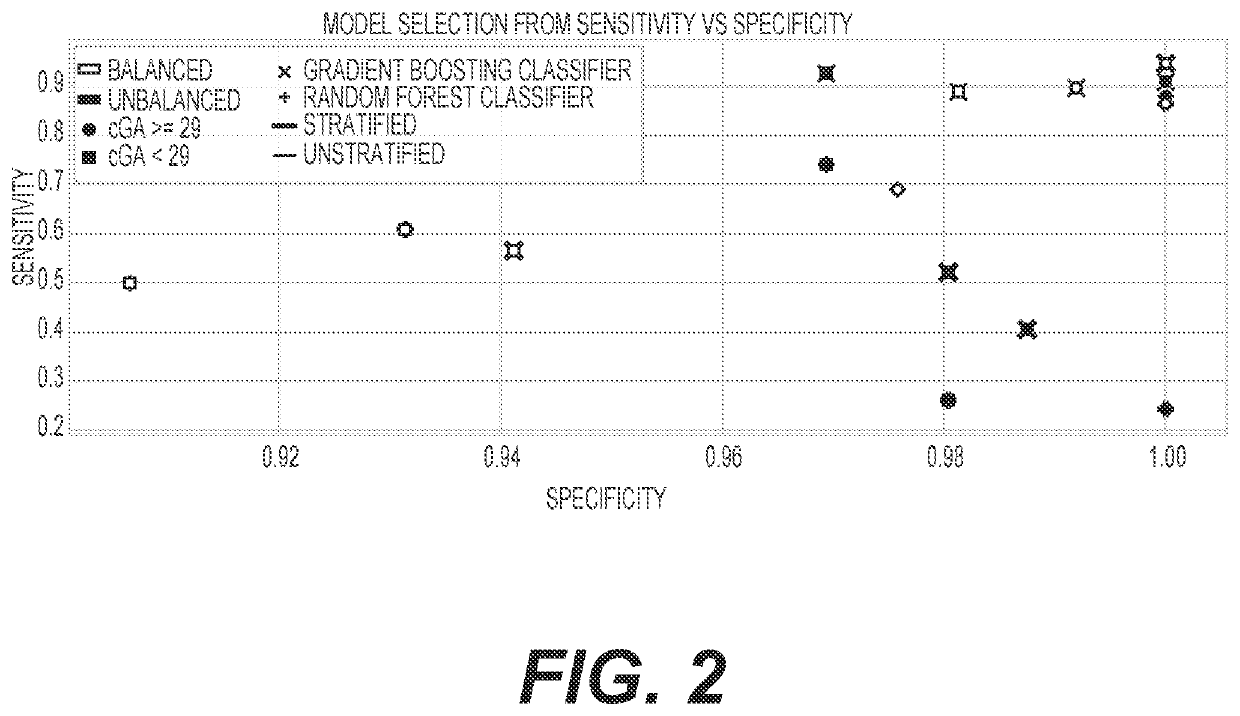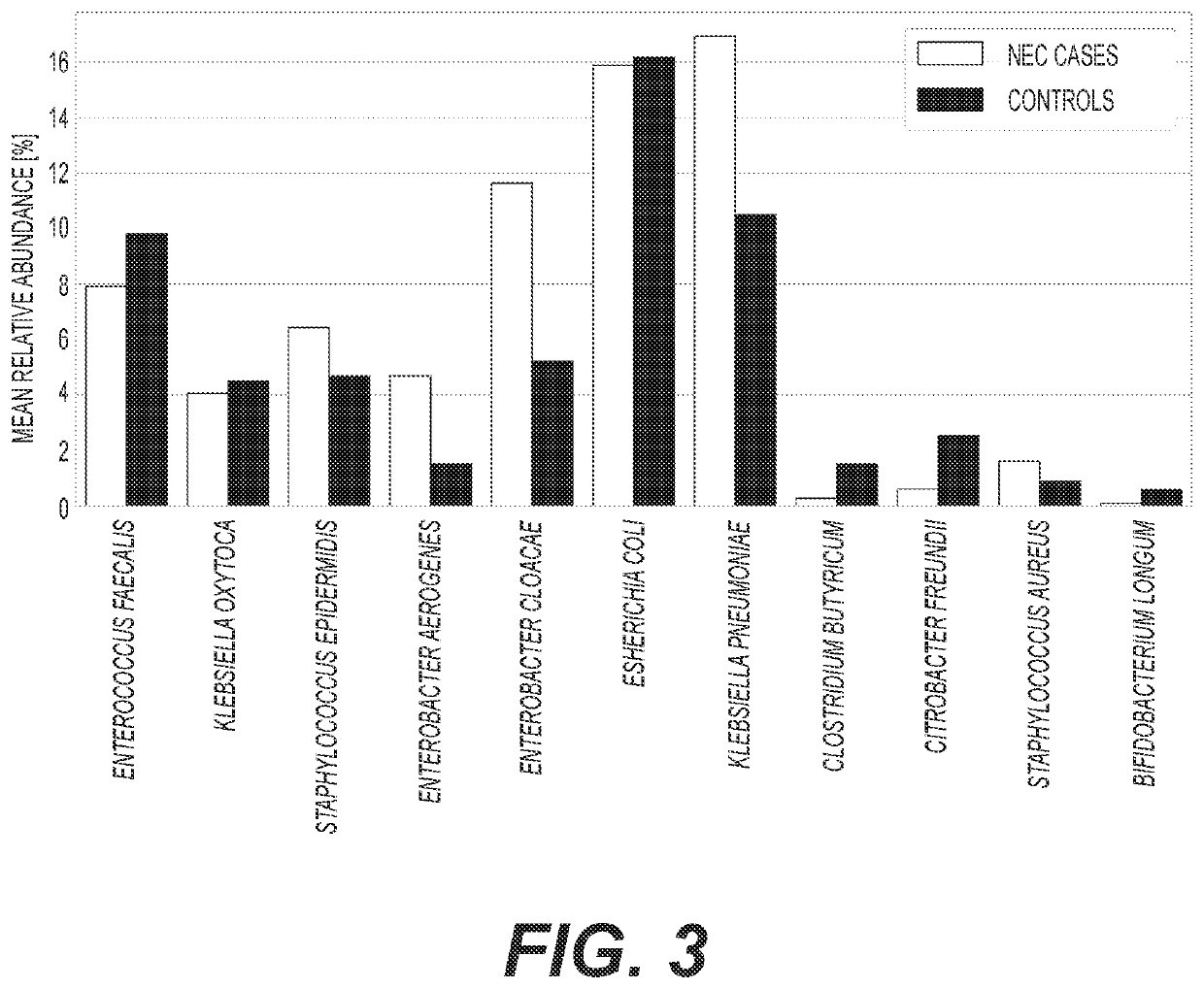Diagnosis and treatment of dysbiosis-associated with nec
a dysbiosis and nec technology, applied in the field of diagnosis and treatment of dysbiosis associated with nec, can solve the problems of difficult treatment, major limitations of focusing on the taxonomic level, and the composition of the microbiome, and achieve the effect of reducing n
- Summary
- Abstract
- Description
- Claims
- Application Information
AI Technical Summary
Benefits of technology
Problems solved by technology
Method used
Image
Examples
example 1
Wide Applications for Repeated Use of the Algorithm to Assess Risk
[0100]Hospitals have the opportunity to assess risk based on banked fecal samples in different hospital units. A cohort may be established that analyzes the metagenomes of all hospitalized individuals within that cohort, separated into those that developed disease and those that did not, or those that responded to treatment and the non-responders to a given treatment. The analysis provides an output of major taxa, superpathways, metabolites enzyme activities, or proteins associated with disease risk. In that particular unit for that particular condition, a treatment plan or protocol can be implemented aimed at eliminating a key risk factor. The success of the treatment, processes or protocol may be assessed by collecting samples from the cohort post-change in practice. The post-change cohort validates the success of the reduction in risk associated with specific treatments, protocols or processes.
[0101]The above may b...
example 2
n of Intestinal Integrity with Altered Microbial Functions
[0102]Intestinal integrity is considered a risk factor for many disease conditions including NEC and late onset-sepsis. Leaky gut results when there is insufficient intestinal integrity.
[0103]B. infantis EVC001 dominant microbiome produces metabolites improve enterocyte proliferation in vitro.
[0104]Short chain fatty acids (SCFA) are an important energy source for host cells to maintain homeostasis. Indeed, SCFAs account for 50-70% of the energy used by intestinal epithelial cells (IECs) and provide nearly 10% of our daily caloric requirements. Given previous findings showing infants colonized with B. infantis EVC001 have significantly increased fecal SCFAs concentrations compared to infants not colonized with B. infantis, we investigated the effect of fecal water (FW) from two distinct populations on enterocyte proliferation and morphology in vitro.
[0105]Fecal Waters (FW) were derived from fecal samples from infants colonized...
PUM
 Login to View More
Login to View More Abstract
Description
Claims
Application Information
 Login to View More
Login to View More - R&D
- Intellectual Property
- Life Sciences
- Materials
- Tech Scout
- Unparalleled Data Quality
- Higher Quality Content
- 60% Fewer Hallucinations
Browse by: Latest US Patents, China's latest patents, Technical Efficacy Thesaurus, Application Domain, Technology Topic, Popular Technical Reports.
© 2025 PatSnap. All rights reserved.Legal|Privacy policy|Modern Slavery Act Transparency Statement|Sitemap|About US| Contact US: help@patsnap.com



